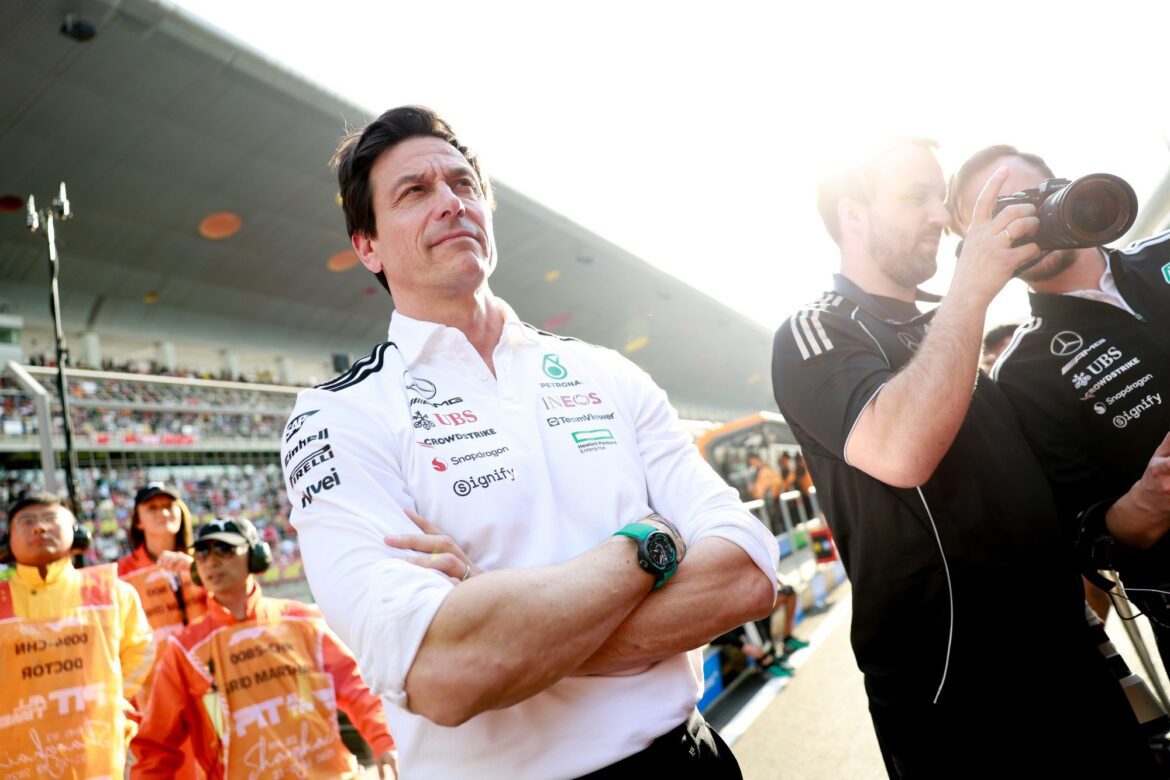Toto Wolff, the CEO and team principal of Mercedes, has indicated that the German racing team possesses its own unique strategies regarding the development of their car for the 2025 season, as well as the upcoming regulatory changes set for 2026 in Formula 1. The pinnacle of motorsport is gearing up for a significant overhaul next year, which will see the introduction of major technical regulations. Among the anticipated changes are the return of active aerodynamics and a dramatic 300% increase in the electrical power of the power units. These modifications represent just a fraction of the challenges that teams will need to navigate.
In light of these upcoming changes, a pivotal question arises for many teams: should they continue to invest in the development of their 2025 cars or pivot their resources towards the substantial innovations required for the next season? This dilemma is particularly pertinent for Mercedes, as they currently sit in second place in the Constructors’ Championship. The team is hopeful that the updates scheduled for the Emilia Romagna Grand Prix will help them close the gap with the championship-leading McLaren team. However, neglecting to invest in the 2026 car development could leave them at a competitive disadvantage as the new season begins.
George Russell has played a crucial role in securing Mercedes’ position in the Constructors’ standings, achieving four podium finishes in the first six races of the 2025 season. When asked in Miami about the team’s focus in light of these competing priorities, Wolff maintained a level of discretion. “I think each team will have its little secrets,” he remarked during a press conference with team principals ahead of the Miami Grand Prix.
Wolff elaborated that Mercedes has already begun reallocating certain groups within their aerodynamics department and larger design office to concentrate exclusively on the car for the upcoming year. He emphasized that early-stage development tends to yield steep performance curves, with significant downforce improvements realized quickly, although this progress tends to plateau over time. Wolff cautioned that a team that starts this transition of resources a month and a half earlier could have a considerable advantage in the 2026 season.
The dynamic nature of Formula 1 means that teams must continually adapt and strategize. As regulations evolve, the ability to innovate and integrate new technologies becomes paramount. The introduction of active aerodynamics is particularly intriguing, as it could provide teams with a vital edge in both speed and handling. This technology allows for real-time adjustments to aerodynamic features, enhancing the car’s performance based on track conditions, driver input, and race strategies.
Moreover, the increased electrical power output signifies a shift towards a more hybrid-focused approach in Formula 1. As sustainability becomes an ever more pressing concern in the automotive industry, the sport is responding by emphasizing hybrid technology and energy efficiency. This change not only aligns with global trends in environmental responsibility but also enhances the competitive landscape of Formula 1.
As teams prepare for these changes, the allocation of resources becomes a critical factor. Some teams may choose to prioritize short-term gains, while others will focus on long-term development strategies. Mercedes, with its rich history of success in the sport, must carefully balance these approaches to maintain its competitive edge. The decisions made during this transition period could have lasting implications for the team’s performance in 2026 and beyond.
In the fast-paced world of Formula 1, the importance of strategic decision-making cannot be overstated. Teams that can effectively manage their resources, anticipate regulatory changes, and innovate will be better positioned to thrive as the sport evolves. The upcoming season represents a unique opportunity for teams to redefine their strategies and explore new avenues for growth.
As the 2025 season progresses, the competitive landscape remains fluid. Mercedes must stay vigilant and responsive to the actions of rival teams, particularly McLaren, which currently leads the Constructors’ Championship. The pressure to perform is immense, and the stakes are higher than ever. Each race presents an opportunity to gather valuable data, refine strategies, and make informed decisions regarding car development.
In this context, communication and collaboration within the team become essential. The synergy between drivers, engineers, and management will be crucial in navigating the challenges posed by the evolving regulations. A cohesive approach to problem-solving and innovation will enable Mercedes to maximize its potential as it prepares for the future.
Additionally, the role of technology and data analysis continues to expand in Formula 1. Advanced simulations, computer modeling, and real-time telemetry allow teams to make informed decisions that impact performance on the track. By leveraging these tools, Mercedes can gain insights that drive their development processes, ultimately leading to a more competitive car.
As the 2026 regulations draw closer, the pressure intensifies for all teams to demonstrate adaptability and foresight. The decisions made in the coming months will shape the future of Formula 1 and determine which teams emerge as leaders in this new era. For Mercedes, maintaining its status as a top contender will require a delicate balance of immediate performance and long-term planning.
In conclusion, the path ahead for Mercedes is fraught with challenges and opportunities. As they navigate the complexities of the 2025 season while simultaneously preparing for the substantial changes of 2026, the team must leverage its strengths, embrace innovation, and stay ahead of the curve. Formula 1 is a relentless pursuit of excellence, and success hinges on the ability to adapt and evolve in an ever-changing landscape. The journey towards the future of motorsport is just beginning, and the choices made today will resonate for years to come.
